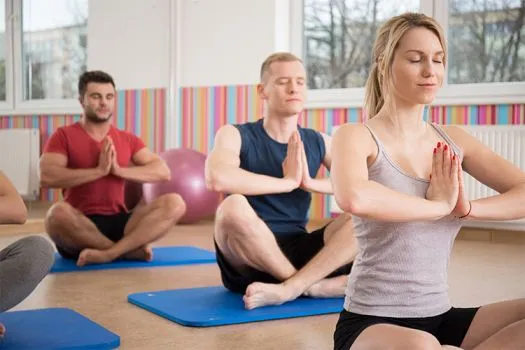Skeletal muscle is one of the three main muscle kinds. Tendons connect these muscles, which contract and create movement, to the bones.
This page discusses how to grow the skeletal muscles, including what types of exercise to do, what nutrients to eat, and when to relax and stretch.
How Do Muscles Grow In The Body?
Muscle size grows when a person repeatedly challenges the muscles to deal with increased amounts of resistance or weight. This is known as muscular hypertrophy.
Muscle hypertrophy occurs when the fibers of the muscles are damaged or injured. The body fuses damaged fibers to increase the mass and size of muscles.
Certain hormones, such as testosterone, human growth hormone, and insulin growth factor, contribute to muscle growth and repair.
These Hormones Function As Follows
Efforts to improve protein processing include preventing breakdown, activating satellite cells, increasing anabolic hormones, and boosting tissue growth.
Strength and resistance training can benefit the body.
- Release growth hormone from the pituitary gland.
- Promote testosterone release.
- Improve muscular sensitivity to testosterone.
Do Males And Females Develop Muscles Differently?
A number of factors, including genetics and levels of estrogen and testosterone in the body, can influence how quickly a person can gain muscle.
Muscle growth rates vary by body type, regardless of biological sex.
Males and females might have the following body types, which necessitate a distinct strategy to muscle building:
-
Mesomorphic: persons with this body type tend to be muscular and gain muscle mass far faster than persons with other body types.
-
Ectomorphic: This phrase refers to a slender or straight frame. Ectomorphs are less likely to gain muscle mass, but they can increase their strength with resistance exercise.
-
Endomorphic: This body shape is more rounded or curved. Strength training is the most effective way for those with endomorphic bodies to gain muscle mass.
However, in an interview with Australian news source ABC, sports scientist Dr. Tony Boutagy identifies some features that are more prominent in males and promote faster muscle growth. These include increased muscle mass, stronger testosterone levels, and tighter joints.
Building Muscle Through Workout

- People gain muscle at varied rates based on their age, gender, and genetics; nonetheless, muscular development dramatically increases if training is:
- Consistent, tough, and long-term.
- People also get the best outcomes when they combine exercise with enough rest.
- Strength training is the most effective way to grow muscle, although cardiovascular activity can also help.
Strength Training
Muscle changes do not become obvious until several weeks or months of constant movement and training.
According to the Physical Activity Guidelines for Americans 2015-2020, individuals should engage in muscle-strengthening exercises involving all major muscle groups at least twice a week.
Examples Of Strength Training Activities Are
Exercise options include free weights, stationary weight machines, resistance bands, body weight exercises (e.g. pushups and squats), and strength training sessions combining these activities.
A 2019 analysis examined the effects of resistance training on crew members' conditioning as they prepared for spaceflight. Its findings indicate that resistance training with three weight sets is generally more beneficial than performing one set.
However, a one-set resistance program was also effective.
Read Also: Best Bodybuilding Programs: Beginner to Advanced
Strength Training and Aging
As a person becomes older, the chance of decreased mobility and other bone and muscular issues, such as osteoporosis or osteoarthritis, rises.
However, older persons should strive to achieve adult exercise requirements whenever possible. If they are unable to do so, they should maintain as much physical activity as their physical limits allow.
Strength training can also help older folks avoid injuries and recover faster.
Cardiovascular Activity

-
Cardiovascular exercise, sometimes known as aerobic activity or simply "cardio," is beneficial to the heart and respiratory systems.
-
Cardio is essential for general wellness. Current standards suggest that individuals engage in at least 150 minutes of moderate intensity or 75 minutes of intense intensity physical exercise per week.
-
While some people believe that aerobic exercise does not assist grow muscle, recent research suggests otherwise. Regular cardio can help with muscle growth and function. It also improves general fitness, which may lower the chance of injury.
-
According to the authors of a 2014 review, aerobic exercise is the best way to grow muscle.
-
Maintain a heart rate reserve of 70-80% (calculated by subtracting resting heart rate from maximal heart rate) for 30-45 minutes at a time, 4-5 days per week.
Rest and Muscle Growth
-
Rest is essential for muscular development. A person's ability to mend is reduced if each muscle group is not given enough rest. Insufficient rest also inhibits fitness progression and raises the chance of injury.
-
According to MOVE!, an exercise campaign from the United States Department of Veterans Affairs, persons should not strength train the same muscle group on two consecutive days.
-
Getting enough sleep is also beneficial to muscle building. According to the authors of a 2011 study, sleep debt reduces protein synthesis, contributes to muscle mass loss, and slows muscle repair. However, many more research are needed to substantiate the link.
-
A 2019 study discovered no clear link between sleep and muscle gain. However, the study's authors imply that sleep loss may increase the amount of cortisol that circulates in the body following exercise. Cortisol is a stress hormone.
-
Reducing stress may help a person build muscle since stress hormones have a negative influence on muscular development.




